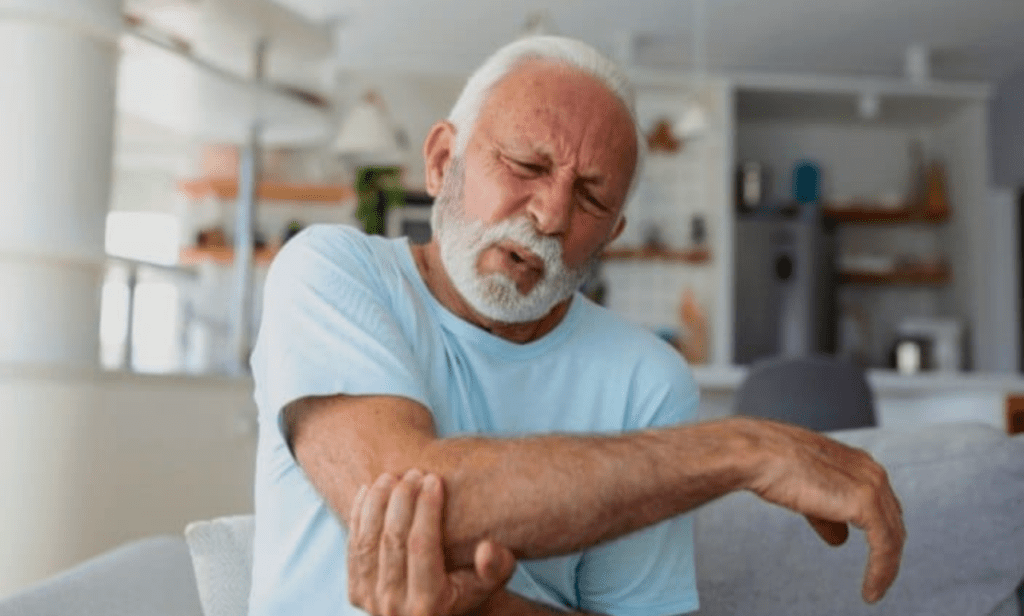
Joint health is the invisible foundation of an active, vibrant life. When your joints function smoothly, you move freely, whether playing with grandchildren, hiking trails, or simply enjoying pain-free mornings. But when joints stiffen or ache, daily life becomes a struggle. Over 32 million U.S. adults battle osteoarthritis alone (CDC), and joint issues impact young athletes, desk workers, and aging adults alike. The good news? Much joint degeneration is preventable or manageable. By understanding how joints work and implementing proactive habits, you can significantly reduce pain, maintain flexibility, and preserve mobility for decades.
Joints are complex structures where bones meet, cushioned by cartilage, lubricated by synovial fluid, and stabilized by ligaments and muscles. Cartilage—a firm, rubbery tissue—absorbs shock and prevents bone-on-bone grinding. Over time, factors like repetitive stress, excess weight, or inflammation degrade cartilage. As it thins, joints become stiff, swollen, and painful. “Think of cartilage like the tread on a tire,” explains Dr. Elena Rodriguez, a rheumatologist at Johns Hopkins Medicine. “Poor alignment, heavy loads, or insufficient maintenance accelerate wear. But with smart care, joints can remain functional well into older age.”
Weight management is non-negotiable for joint preservation. Every extra pound exerts four pounds of pressure on knee joints during walking. For someone 50 pounds overweight, that’s an added 200 pounds of force per step. A landmark study in The Lancet followed 5,000 adults with knee osteoarthritis for 18 months. Participants who lost 10% of their body weight reported 50% less pain and dramatically improved mobility. Shedding weight reduces inflammatory cytokines—proteins that accelerate cartilage breakdown. Start small: cutting 250 daily calories (e.g., skipping a sugary soda and bag of chips) can lead to a half-pound weekly loss, significantly easing joint load over time.
Movement is medicine, but the right type matters. Low-impact exercises like swimming, cycling, or elliptical training boost blood flow to joints, delivering oxygen and nutrients while flushing out inflammatory waste. Strength training is equally vital: muscles act as shock absorbers. Strong quadriceps, for example, absorb up to 30% of knee stress. Sarah Chen, a 58-year-old teacher, avoided knee surgery by strengthening her quads and hamstrings through physical therapy. “Three months of targeted exercises reduced my pain by 80%,” she notes. Aim for 150 weekly minutes of moderate activity (Arthritis Foundation), including:
- Daily stretches: Seated heel slides, wrist circles, or shoulder rolls combat stiffness.
- Functional strength: Squats (even chair-assisted), lunges, or resistance band pulls.
- Balance work: Single-leg stands reduce fall risk, protecting joints from trauma.
Nutrition directly influences joint inflammation and repair. Omega-3 fatty acids (in salmon, walnuts, and flaxseeds) suppress inflammatory pathways. Vitamin C (citrus, bell peppers, broccoli) is essential for collagen synthesis—the protein forming cartilage’s structural matrix. A UCLA study found that rheumatoid arthritis patients who eliminated processed sugars for 6 weeks experienced 30% less joint swelling. Avoid these inflammatory triggers:
- Sugary drinks and snacks
- Refined carbs (white bread, pastries)
- Excessive red meat
- Trans fats (fried foods, margarine)
Instead, prioritize anti-inflammatory foods: turmeric (pair with black pepper for absorption), ginger, leafy greens, and berries. Hydration is critical—cartilage is 80% water. Dehydration thickens synovial fluid, reducing lubrication. Drink half your body weight (in pounds) in ounces of water daily.
Evidence-based supplements can support—not replace—healthy habits. Glucosamine and chondroitin may modestly reduce osteoarthritis pain by aiding cartilage repair (NIH). Curcumin (turmeric extract) rivals some NSAIDs for inflammation reduction but requires piperine (black pepper) for absorption. Vitamin D3 deficiency correlates with higher arthritis risk; test levels and supplement if below 30 ng/mL. “Supplements work best alongside diet and exercise,” stresses Dr. Rodriguez. “Never self-prescribe—consult your doctor, especially if taking blood thinners or diabetes medications.”
Ergonomics and daily habits prevent “silent” joint strain. Poor posture at desks or during driving misaligns joints, unevenly loading cartilage. Solutions:
- Use lumbar support chairs
- Position computer screens at eye level
- Wear supportive shoes (replace every 300–500 miles)
- Kneel on padded mats during gardening
Sleep quality also affects joints. Side-sleepers should place a pillow between their knees to align their hips. Back-sleepers benefit from a cushion under the knees to relieve lumbar pressure.
When pain persists (swelling >2 weeks, redness, or limited motion), seek expert care. Physical therapists design personalized plans to strengthen muscles without straining joints. Corticosteroid injections temporarily quell inflammation flares. For advanced osteoarthritis, joint replacement remains highly effective—modern knee/hip implants last 20+ years with 95% patient satisfaction (Journal of Arthroplasty).
Emerging science offers revolutionary hope. Biologic drugs (like TNF inhibitors) target precise inflammatory molecules in autoimmune arthritis. Regenerative therapies, such as platelet-rich plasma (PRP) injections, harness the body’s growth factors to stimulate cartilage repair. “We’re transitioning from managing degeneration to promoting regeneration,” says Dr. Michael Torres, orthopedic researcher at the Mayo Clinic. Though still evolving, these innovations underscore a key truth: proactivity is power.
Your joints are designed for a lifetime of motion. By moving mindfully, nourishing strategically, and listening to your body’s signals, you empower yourself to climb stairs without wincing, travel without stiffness, and embrace active joy at every age. Start today—your future mobility depends on it.
